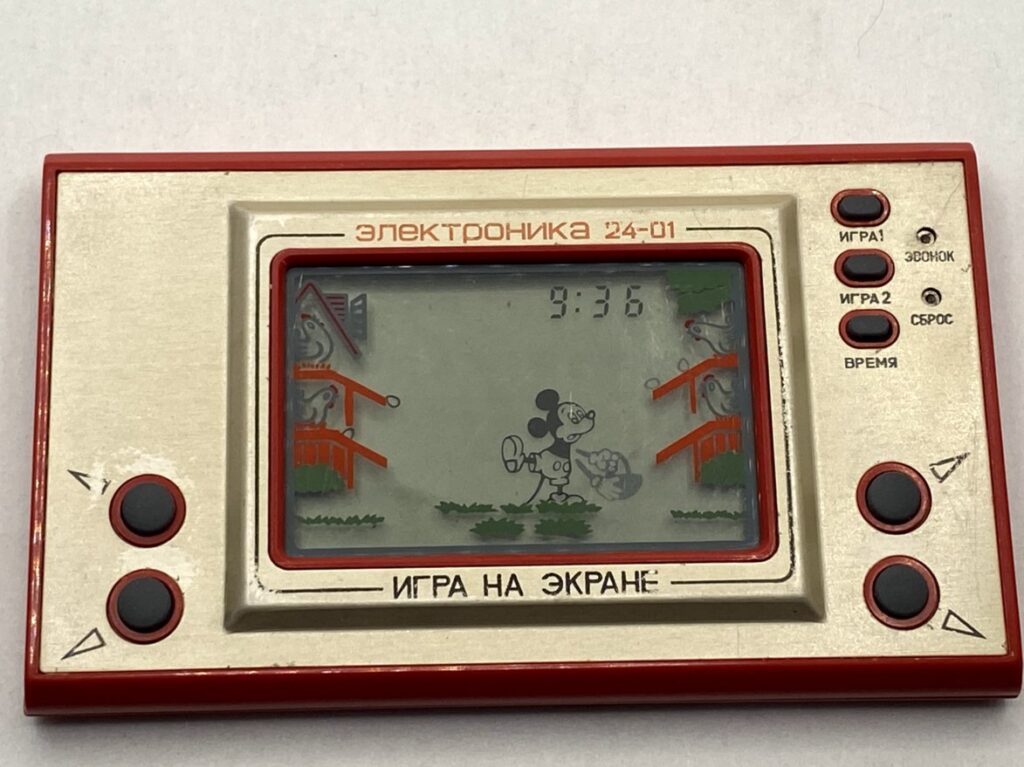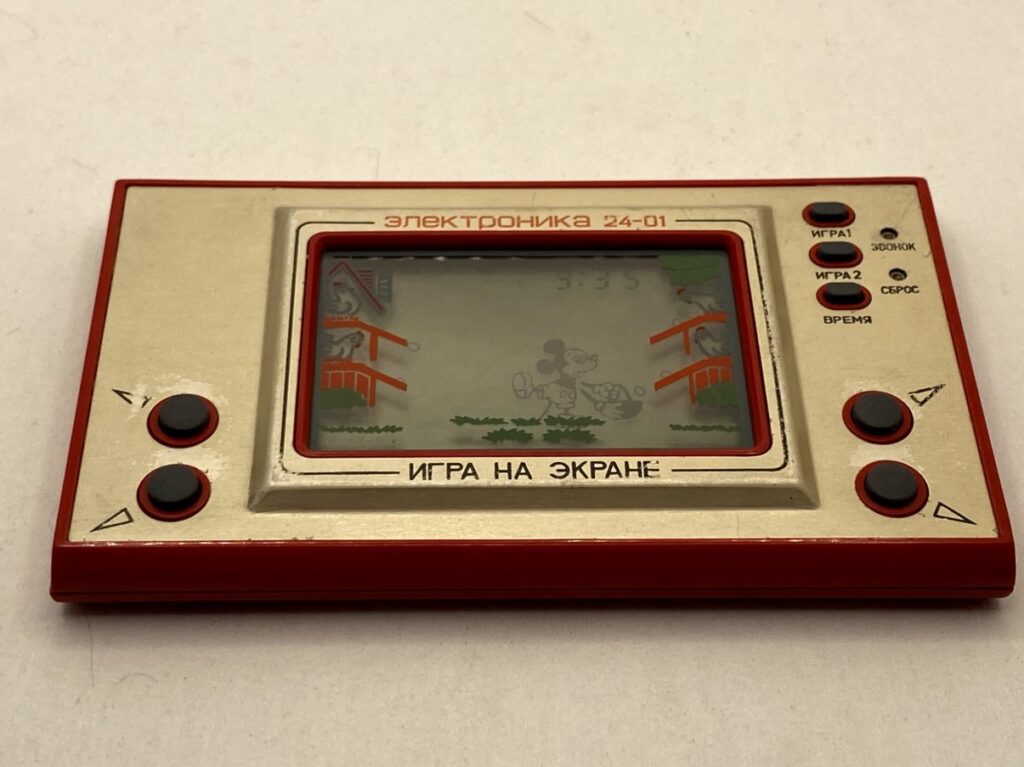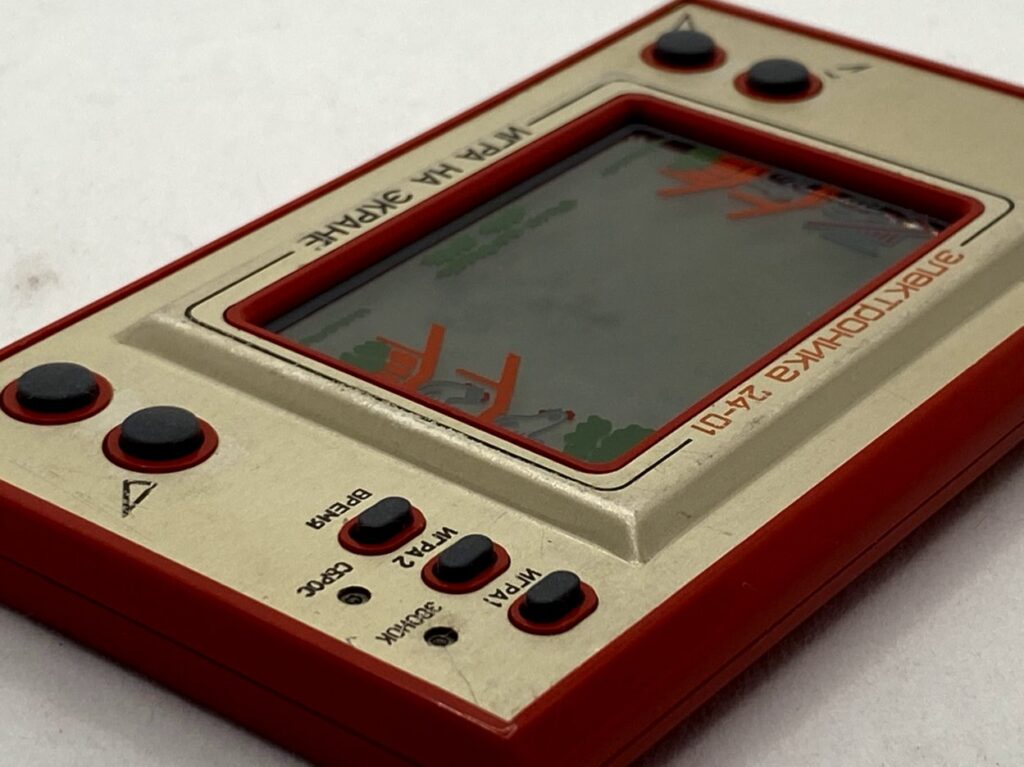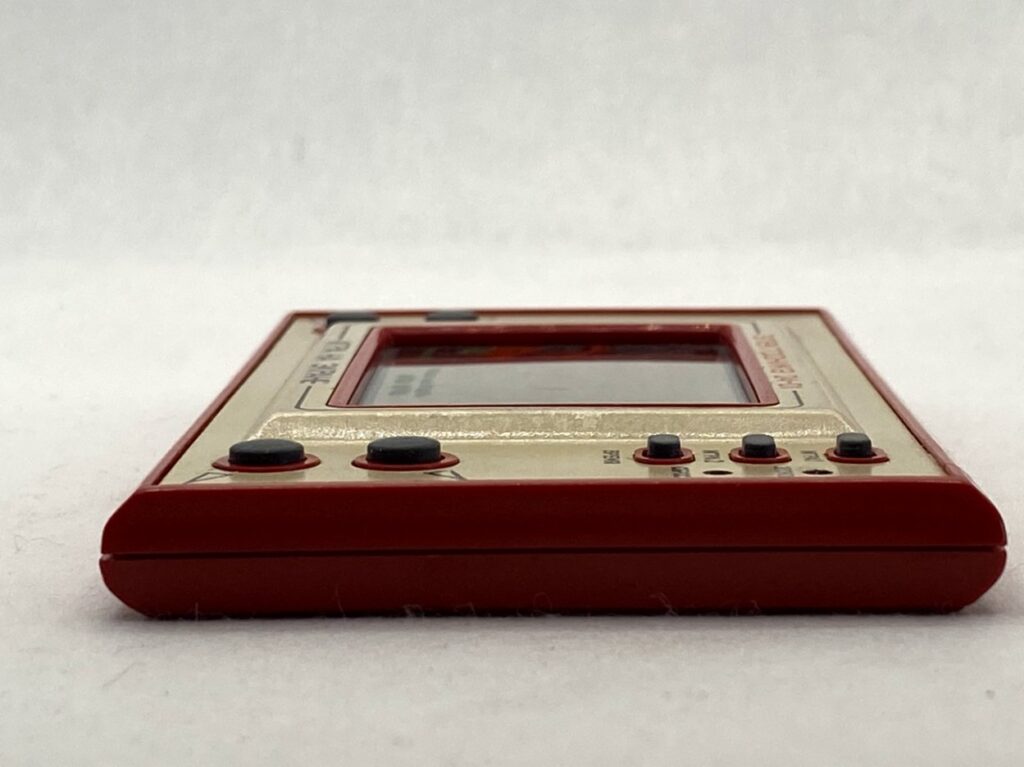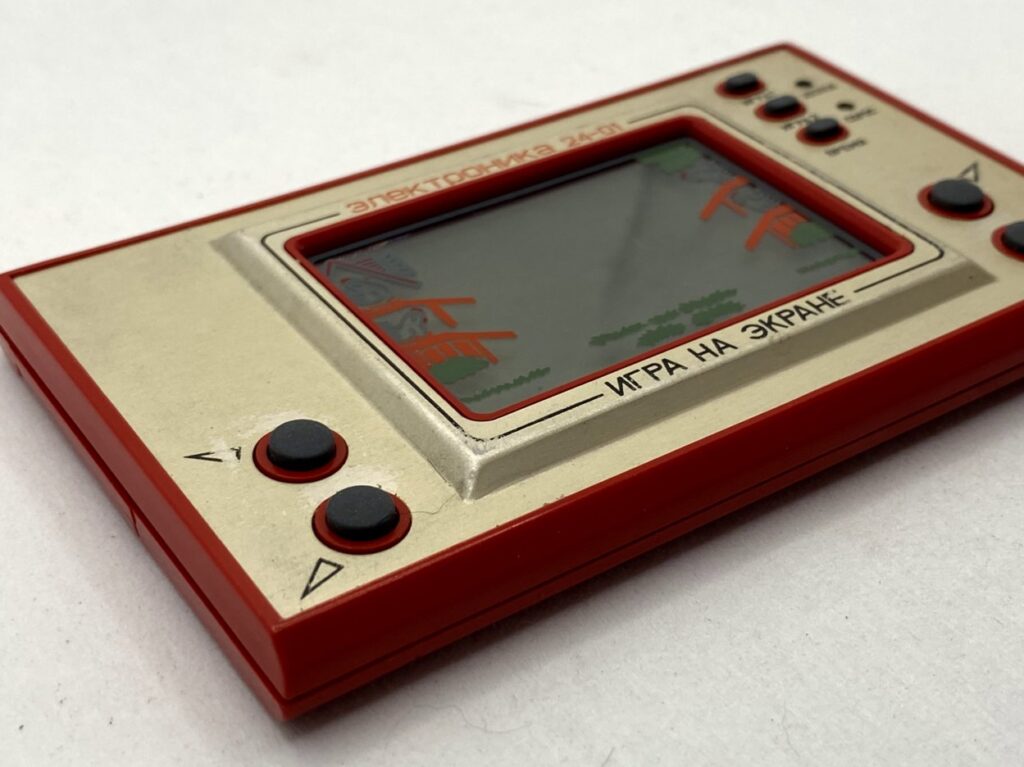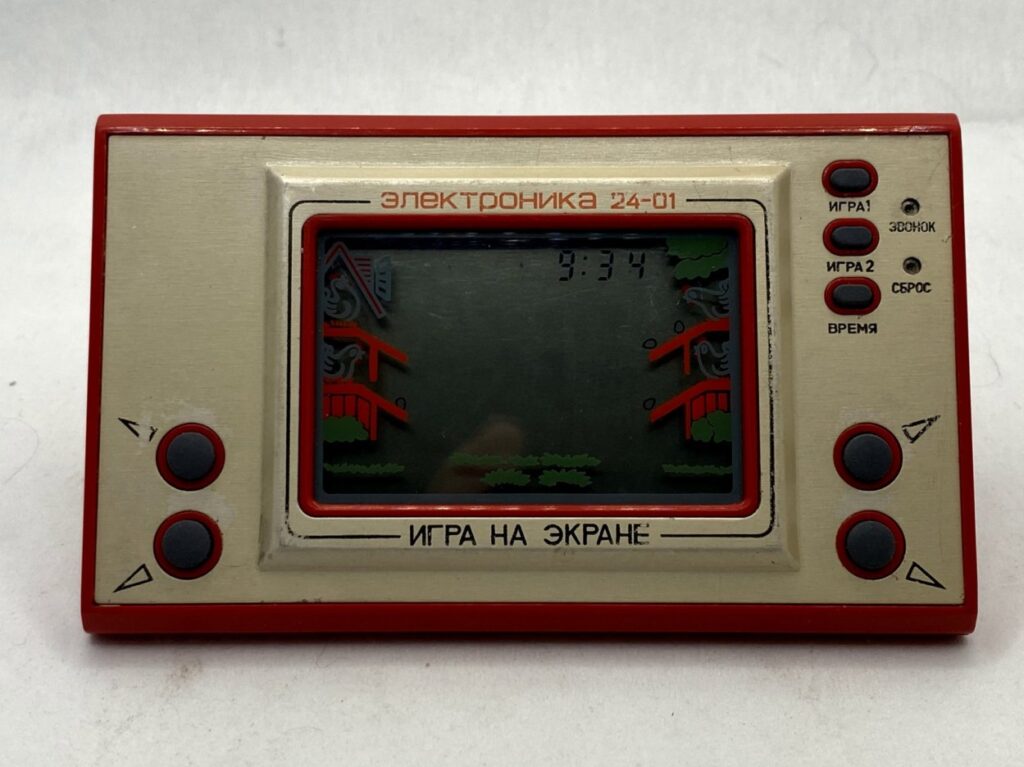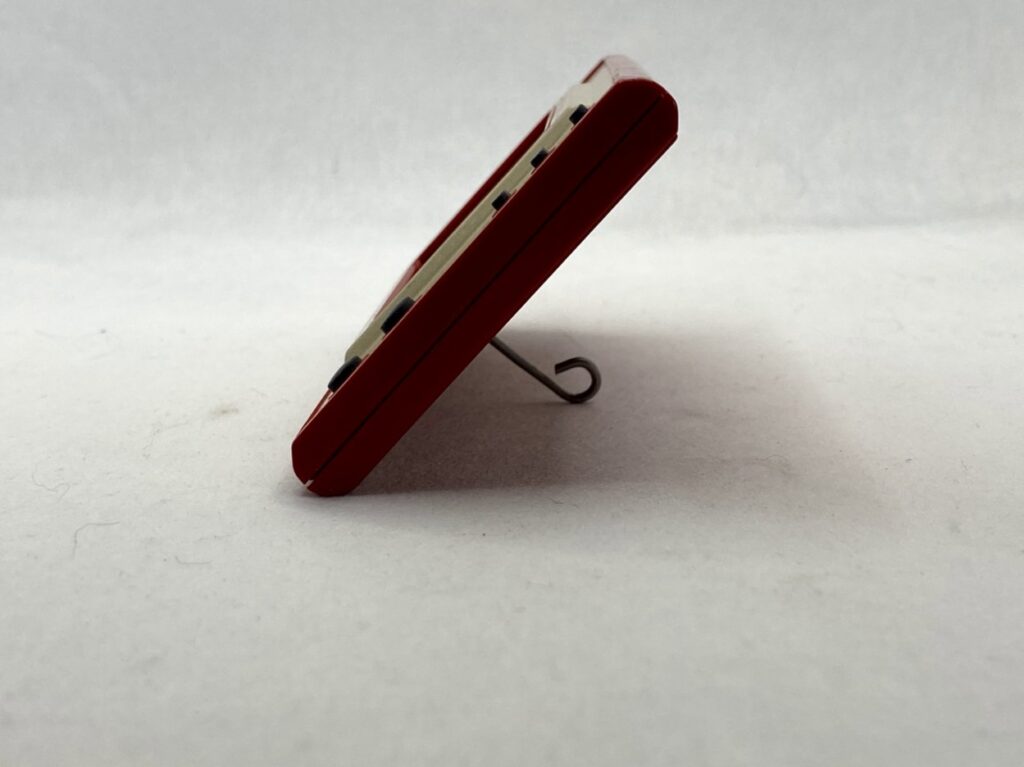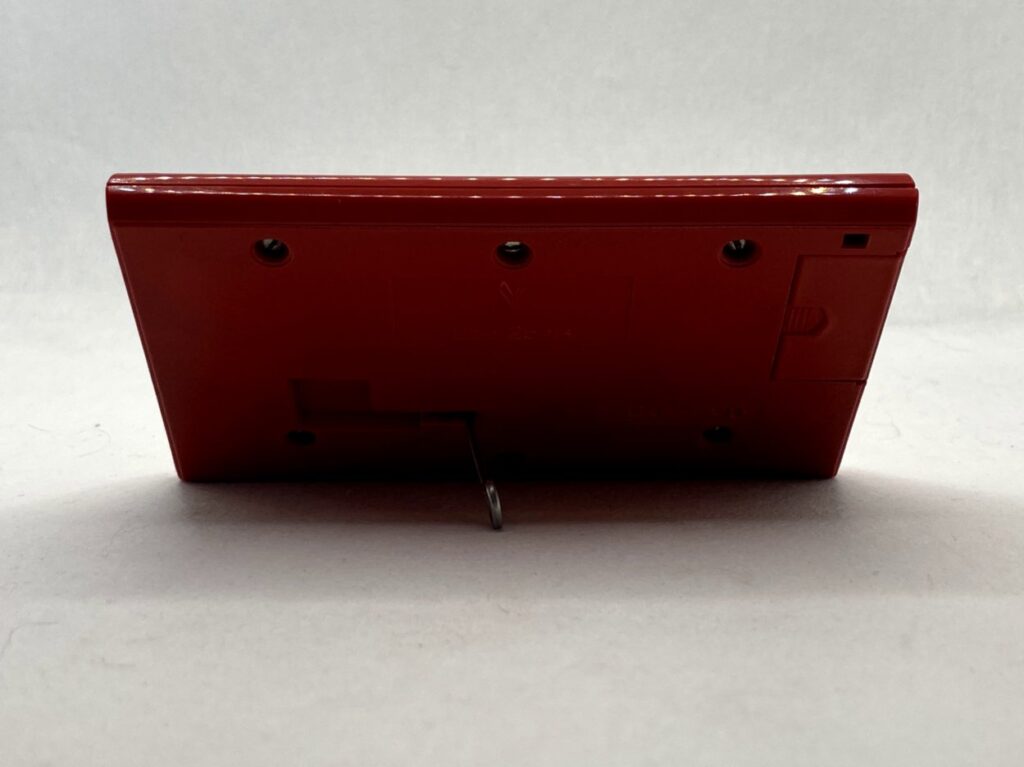Russia’s Game & Watch
November 8, 2020Back in the 1980s, many of the Soviet Union’s most talented engineers were moonlighting. They all had a day job, of course, to create for the country’s military, but they were also asked to try and come up with a wide host of consumer electronics to help with what was becoming a massive shortage.
That’s how the Russian brand name Electronika came about, it was brand used to connote products designed by those talented engineers and built by factories belonging to the Soviet Ministry of Electronic Industry.
It was from Electronica that the country received an eclectic mix of products including calculators, watches, computers (famously, Tetris was designed on one of these — the Electronika 60), tape recorders, and games.
The games had a very familiar look to them, with a single LCD screen, one game each, and the ability to also show the time. These Electronics IM were, essentially, Russia’s take on Nintendo’s famously popular Game and Watch line of games.
Produced from the mid-’80s to mid-’90s, they seem mostly to be complete copies of Nintendo’s own line. Though there are a few standouts with their own Russian roots, like the popular Just Wait, based on a popular Russian cartoon.
All of the games started with the letters IM, which stand for Igra Mikroprocessornaja – an acronym for microprocessor. I believe that the first in the series, which I was lucky enough to purchase from a seller in Georgia (the country, not the state), is 24-01 Game on Screen: Mickey Mouse.
Released in 1984, Game on Screen: Mickey Mouse has the familiar, solid build of a Game & Watch title with a few very minor differences. The biggest, of course, is that the writing is all in Cyrillic.
It is a solid clone of the 1981 Nintendo Game & Watch title Mickey Mouse, the fifth game in the third series of Game & Watch titles released by Nintendo and most notable because they were widescreen. The Russian version is not.
In both games, players control a frantic Mickey Mouse as he tries to catch eggs rolling down four chutes and headed for the hard ground below. The player has to push one of the four corresponding buttons to get Mickey’s basket in the right position. All the while, Minnie Mouse can be seen waving from an open window in the top left corner. Both version also have two game modes, one mode only uses four chutes.
The case is even the same color as the Nintendo original, though there is a rectangle of empty space on the top right corner of the Russian clone where the Nintendo version has both Game & Watch printed, and a picture of a bow-tie-wearing, smiling Mickey.
Sure, they’re almost entirely clones, but they’re also a stark reminder of how segmented and hard to find video games used to be.
Love retro handhelds? Well then, have I got a bunch of stories, videos, and pictures for you.
